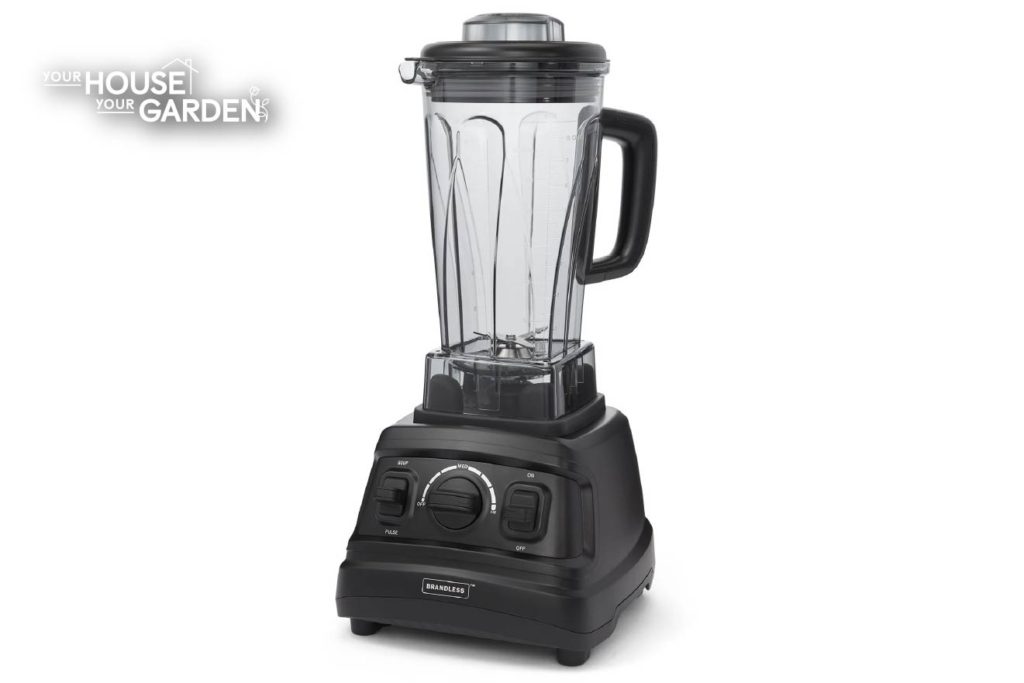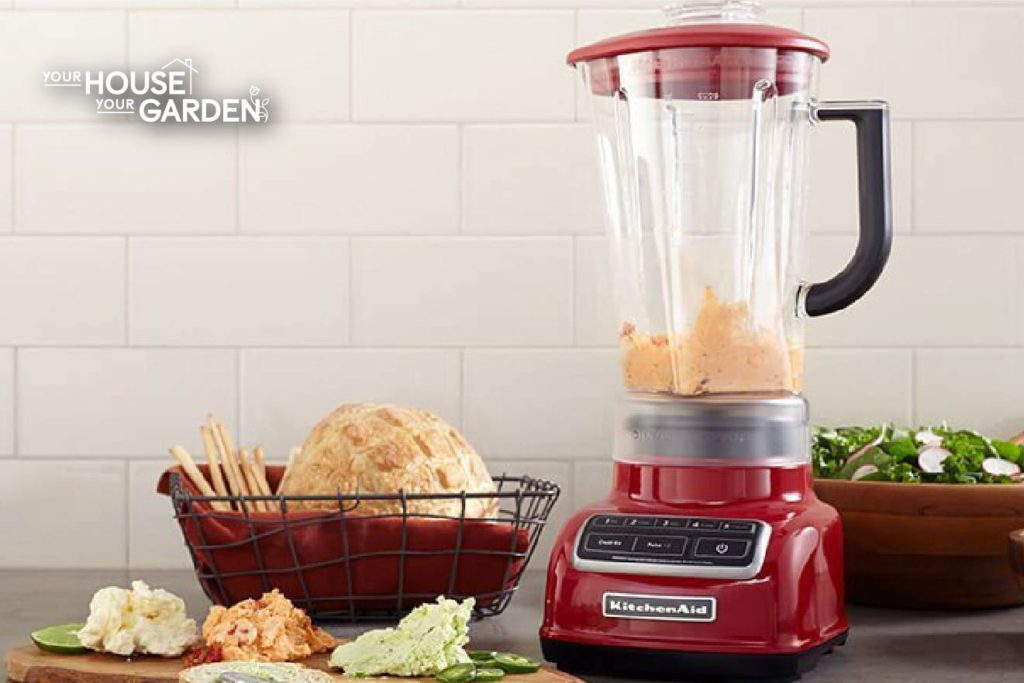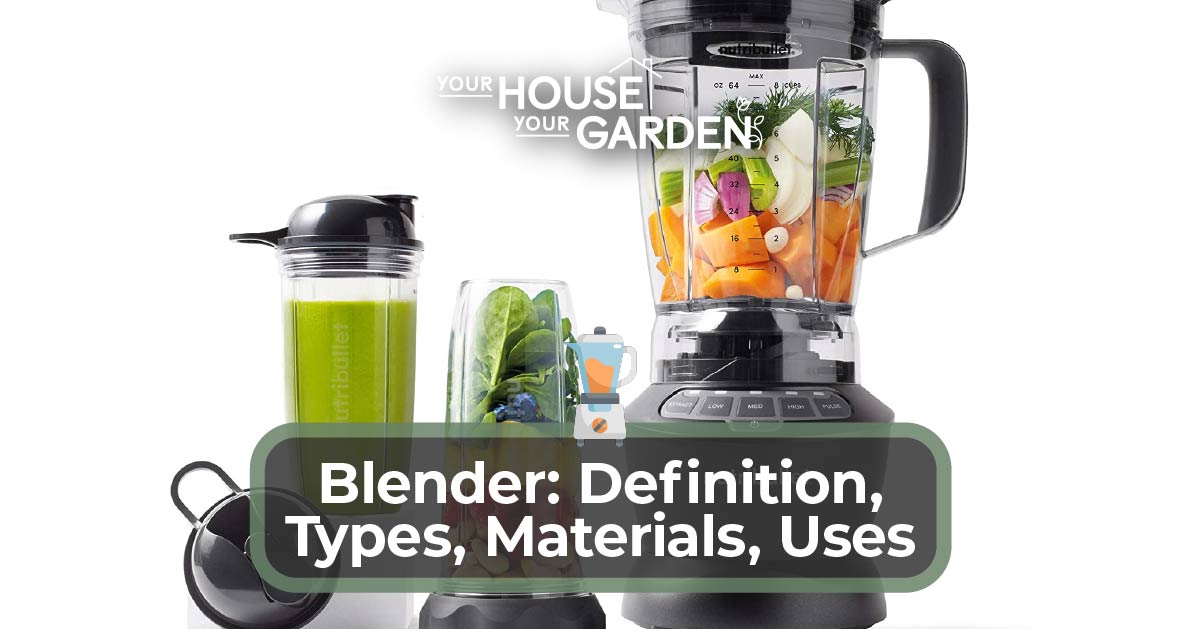A blender is a small kitchen appliance used to blend ingredients together. Blenders are also capable of chopping or pureeing ingredients to make smoothies. Blenders are commonly used to make smoothies or to squeeze juice from fruits and vegetables. A blender can also be used to puree large ingredients, like carrots or celery.
The most common blenders are made of plastic materials. Blenders can also be made with stainless steel or glass materials, which affects longevity and price. Most Blenders come with a base and detachable cup.
Stainless steel blenders last longer than other types of blenders because they’re more durable when chopping larger ingredients. Stainless steel blenders cost more than plastic or glass blenders but last longer. Glass blenders are more expensive than plastic blenders but cheaper than stainless steel blenders.
Blenders come in different sizes, with the size of the blender determining the size and number of beverages you can make at one time.
The history of the blander dates back to 1922. Stephen Poplawski added a blade to a tall cup to blend soda fountain drinks.
Materials for Blender
The ideal material for a blender is stainless steel. Stainless steel blenders are preferred because they are durable and long-lasting.
Stainless steel blenders cost more than other types of blenders. The cheapest type of blender is made with plastic materials but is more likely to break or wear out faster. Glass blenders may cost more or less than stainless steel blenders, depending on the quality of the glass materials.
Glass blenders are more durable than plastic blenders but more prone to breaking than stainless steel.
People who are concerned about environmental health may want to consider a stainless steel blender. Stainless steel blenders are usually made with BPA-free materials. There have been some reports of the plastic materials used in home appliances being made with dangerous chemicals. If you’re concerned about these risks, you can choose stainless steel or glass materials instead.
Types of Blender
The blender types are as follows:
- Countertop blender: A countertop blender is a blender that sits on the countertop with a motor that blends, chops, and mixes. Heavy-duty blenders are usually countertop.
- Immersion blender: An immersion blender is a stick blender that mixes directly in a bowl or pot. An immersion blender is small, handheld, and can be stored in a drawer.
- Personal blender: A personal blender is a small blender that comes with a detachable cup. Personal blenders are designed for blending a single serving of beverage.
Sizes of Blender
The ideal size of a blender depends on the number and type of ingredients you use most. A smaller blender is only capable of blending two or three ingredients together, whereas a larger blender can accommodate more or larger ingredients.
The speed of a blender is also important to consider. If you frequently blend larger ingredients, like carrots or celery, you will want to choose a blender with high power settings and between 3-10 speed settings. Having a pulse control is also recommended with larger blenders.
Different sizes of blenders can affect storage options. Countertop blenders can take up a lot of counter space, whereas immersion, personal blenders can be stored in a drawer.
Does Size Affect Blender’s Usage?
Size matters when choosing a blender. Choosing a blender that is too small for your ingredients will limit your blending options. A blender that is too large can make it difficult to consistently blend ingredients together.
What size blender do I need? That depends on the number of beverages you make each time and how many ingredients you use. Most countertop blenders hold between 1 and 2 liters, which is between 4 and 8 cups. A personal-size blender that only makes one beverage holds around 2 cups of liquid. Larger, commercial blenders hold up to 14 cups.

Use Cases of Blender
A use case of a blender is a specific way in which you use your blender when making smoothies or other beverages. A few use cases of blenders include:
- Sauces and dips, like mayonnaise or hummus.
- Frozen desserts, like ice cream or sherbet.
- Beverages, like smoothies or shakes.
- Puree foods, like baby food or soup.
- Chop ingredients, like breadcrumbs or nuts.
- Mix batter for pancakes or cupcakes.
- Make powdered sugar.
- Make flour.
Once you learn how to use a blender, you will find it easy to blend fruits and vegetables together for delicious beverages.
Do Blenders Have Health Benefits?
Using a blender can offer you health benefits. You can use a blender to turn fruits and vegetables into tasty drinks. When you use a blender to squeeze juices from fresh fruits, it maintains many of the essential vitamins and nutrients, including fiber.
Blending ingredients together can also make it easier for the body to absorb nutrients, as the blender breaks down the plant’s cell wall.
Most Known Blender Brands
Some of the top blenders brands right now include:
- Best overall blender brand: Vitamix
- Best value blender brand: KitchenAid
- Best brand for a countertop blender: Ninja
- Best brand for an immersion blender: Breville
Blender Lifespan
The typical lifespan of a blender is between 3 to 5 years. How often, and the types of beverages you make, affect how long a blender lasts. Carefully cleaning the blender between uses can help it last longer.
The factors that affect how long a blender lasts include:
- Frequency of use: How often you use your blender will affect how long it lasts. If you use your blender daily, you can expect to replace it sooner.
- The initial quality of the blender: The initial quality of your blender affects how long it lasts. Stainless steel blenders last longer than plastic blenders.
- Cleaning schedule: Cleaning out the blender in between uses can help it last longer. A stainless steel blender is less prone to scratches during washing than plastic blenders.
- Blender storage: Where you store your blender can also affect its longevity. Storing your blender in a cupboard with plenty of space can help it last longer.
A blender costs between $20 to $600. Smaller, plastic blenders with fewer features cost less than larger, stainless steel blenders with more features.
How Does Culture Affect the Usage of Blenders?
The blender is most often used in the United States. The blender was initially invented in the U.S. and it’s estimated that as many as 90% of the country own a blender. The blender is also used less frequently in Germany, China, Japan, and the United Kingdom. Other versions of the blender, like the immersion blender, started in Switzerland, and are still popular today.
Relevant Kitchen Tools to Blender
Other kitchen tools that are similar to a blender include:
- Mixer: A mixer is similar to a blender because both appliances blend ingredients together. A mixer is different from a blender because it combines ingredients into a single serving, whereas a blender blends ingredients into a liquid consistency.
- Food processor: A food processor is similar to a blender because both appliances mix ingredients together. A food processor is different from a blender because it’s designed to slice and shred ingredients, whereas a blender crushes ice and purees ingredients.
- Juicer: A juicer is similar to a blender because both appliances finely chop ingredients into a liquid. A juicer is designed to squeeze juices out of fruits and vegetables, whereas a blender doesn’t separate ingredients and instead mixes them together.
- Coffee grinder: A coffee grinder is similar to a blender because both appliances break ingredients down. A coffee grinder is designed to grind down coffee beans, whereas a blender is capable of grinding down ingredients and mixing them.
Difference Between Blender and Juicer
The main difference between a blender vs a juicer is how each appliance works. A juicer works by extracting juices from fruits and vegetables, separating the juices from the pulp. A blender works by blending ingredients together rather than separating them.
Another difference between a blender and a juicer is the benefits of each. A juicer is capable of extracting juices from fruits and vegetables, but because it removes the pulp, it also gets rid of fiber and other essential nutrients. A blender doesn’t remove any parts of the ingredients, maintaining the health benefits.
Features of a Good Blender
Here are eight features of the best blenders:
- Power: You want a blender that is powerful enough to chop the type of ingredients you use most. A blender’s power is measured using horsepower or wattage, with an average of 2hp or 500 watts.
- Size: You want a blender that is large enough to accommodate your needs. Consider the size of the blending cup and the blending arms.
- Removable center cap: A removable center cap allows you to add ingredients while the blender is already blending.
- Measurable cups: Blenders with measurement lines make it easier to measure liquids and ingredients.
- Pre-programmable settings: Pre-programmable settings allow you to choose the consistency you want when blending.
- Personal cups: Personal cups can be used to blend your beverage, add a lid, and go on with your day without transferring it to another cup.
- Cordless: Most blenders come with a cord, but cordless options are available which can give you more flexibility when cooking.
- Interchangeable arms: A blender with interchangeable arms can help you get a better blend based on the ingredients you’re using.

Components of a Blender
A blender is made up of the following parts:
- Lid: The lid secures the ingredients inside the blending jar.
- Jar: The jar is where you place the ingredients while blending.
- Blades: The blades are what chop and blend the ingredients.
- Base: The base includes the housing unit and electrical components of the blender.
Repair Options for a Blender
If your blender stops working, you may be able to replace certain parts without having to replace the appliance. Some available blender replacement parts include:
- Blender jar: If the jar gets chipped over time, you may be able to replace it with a new blending cup.
- Blender lid: If the lid seal wears down, you may replace it with a new lid to keep ingredients secure.
- Extractor blade: The blade may wear down over time, and you may be able to replace it with a new one.
- Tamper: The tamper is a long tool used with some blenders that can be replaced at an affordable cost.
Difference Between a Blender and Coffee Grinder
The main difference between a blender vs a coffee grinder is the type of ingredients that each appliance is used with. A blender is used with fruits and vegetables, like apples and pears. A coffee grinder is used with dry, hard substances like coffee beans.
Another difference between a blender and a coffee grinder is the use case of each one. A blender is used to blend ingredients together into a smooth consistency. A coffee grinder is primarily used to grind down coffee beans before brewing.
Blender Name Origin
The blender gets its name from its purpose of blending ingredients together.
You can spell blender as: B-l-e-n-d-e-r.
To pronounce blender, say: (Blen-dr).
Blender History
The first blender was invented in 1922 by Stephen Poplawski. This antique blender featured a spinning blade on top of a tall container. The primary purpose of this blender was to make soda drinks. Later, Fred Osius, improved upon this blender, inventing the Waring Blender.
The Waring Blender was invented in 1933. This version of the blender didn’t really take off, but Fred Osius was also later involved in the invention of the first Hamilton Beach blender.

